Notes from the Apiary is a new section of my Substack, which is functionally two things: a monthly look into my beekeeping year, and my own efforts to move forward with the idea of turning all this into a book. These will live in their own little tab on my Substack and you can choose whether or not to receive them if you are an email subscriber
Awakening
In this season, the queens are beginning to stir. They take queues from exactly what, we do not know. Maybe urged by her daughters who have been out of the hive, maybe some sense of change in pressure, temperature, but something in her says, it is time to begin again. So as the cluster ebbs, she begins to lay eggs again. These will be the first of the new young that will hatch and bear the first of the strong spring honey flows. For now, her sisters who have survived the winter will venture out to collect the first of the pollen, the necessary sustenance for these newly developing young.
Honey bees do not hibernate. They do not sleep through the winter, rather, like some kind of suspended consciousness, they cluster together, creating warmth and maintaining life when most of the world around them is asleep. And like spring, their return to wakefullness is met with fits and starts, unclustering on warm clear days, and coming back together at signs of freeze. This time is precarious. Just like it is for so many creatures this time of year. The queen chooses her time to begin laying with some unseen knowledge that by the time they are grown, there will be food enough for all. But she does this when there is little sure signs. Only small ones, like the surge of the maple sap and the opening of their rosy buds. Most of these early plants don’t provide nectar. No, that might freeze. These early flowers are full of pollen though, exactly the protein needed for all those new larva.
All month long I have felt this tightrope walk of spring, this careful dance of listening to that inside stirring, that call from the depths - now is the time. To act, to shift the focus, to move forward on certain ideas, to follow through on plans made in the quiet silence of winter. I am shifting and moving too. And it feels scary, to reanimate back into action. But it is wholly necessary if I want to thrive.
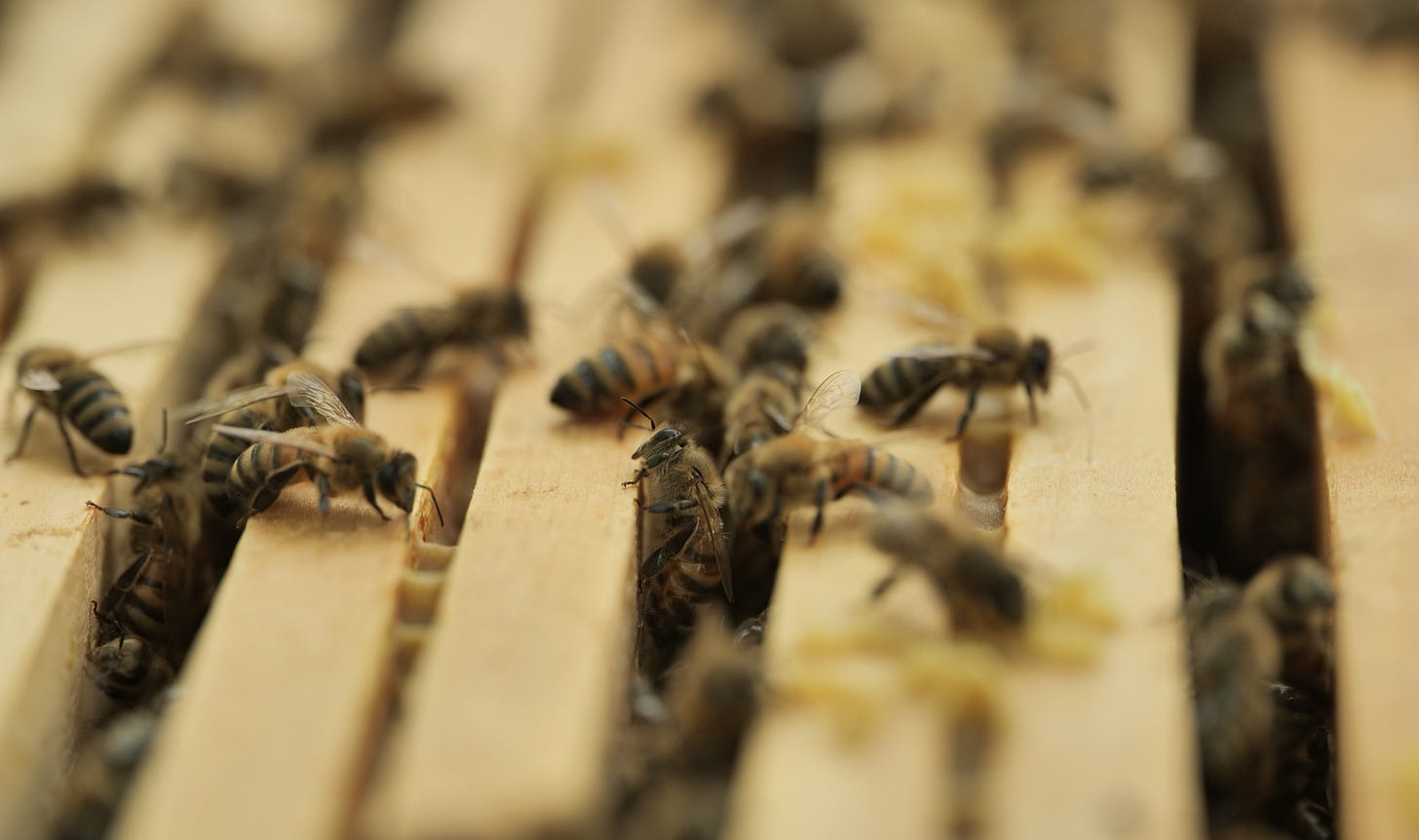
March Journal
03/03 - I visited the NN apiary today, and found that I have lost Fern, my strongest hive, the one I thought for sure would make it through. After spending some time holding the loss, I started the difficult process of analyzing. Trying to figure out why I lost them. My best guess is they had trouble exiting at the upper entrance (it was slightly covered by the insulation wrap). It certainly could have been Varroa mite pressure, though their numbers were not excessive when I tested in August. Either way I plan to send them in for testing at the Beltsville Bee Lab, though I may not get results back anytime soon.

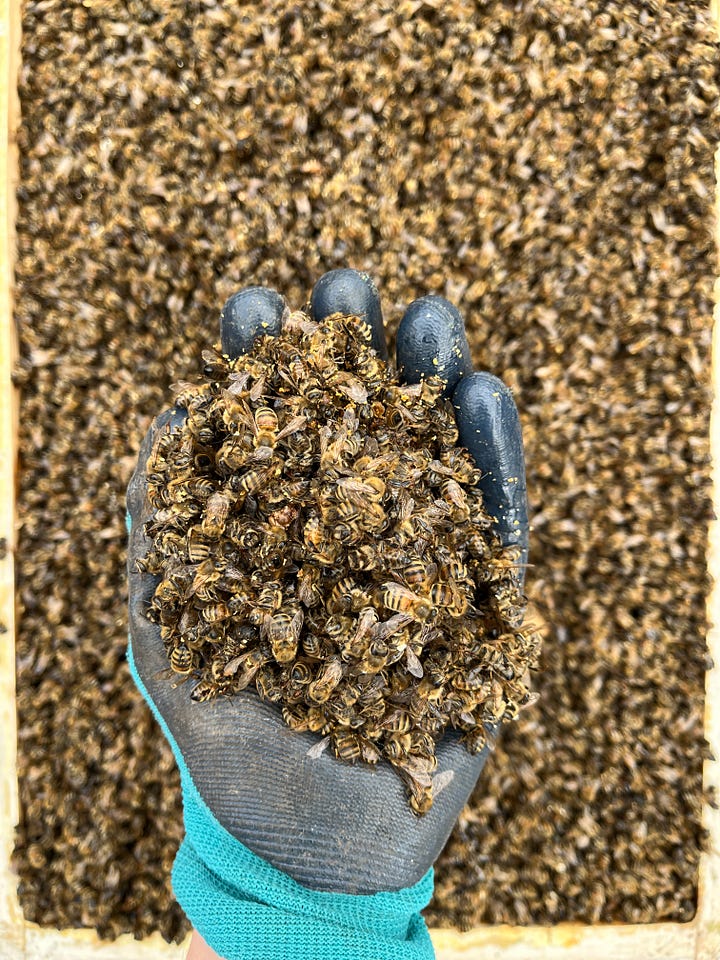
03/12 - the Madison bee group reports blooming maples, of which I have not seen in my area yet, but I’m sure it will be soon, all the blooms are swollen. Willows may be starting also.
03/18 - I found the first of the bud casings from our neighbors saucer magnolia, a furry shell that protects it from cold. A tenuous time, since we are projected to get a snow storm tomorrow
03/19 - Rain turned to sleet turned to hail then to snow. Spring in Wisconsin.
03/23 - We went out to visit a friends sugar shack today, despite the rain. It was a fascinating thing to see the maple tapping process, and I chatted with one of the co-op partners about keeping bees. We always find each other don’t we?
03/26 - I took advantage of the cold hard ground and sun and went to clean up at the apiary today. I have one other space in mind to use this season, perhaps if the top bar hive pans out. Fingers crossed!
History and Folklore
Tears of the gods
In most ancient civilizations we see evidence of the importance of honey bees, and none such more than the Egyptians. Because of their early writing system, heiroglyphics, and preserved temple artwork, archeologists have been able to learn much from so long ago.
Honey bees were a multifaceted part of Egyptian culture. According to Egyptian mythology, the sun god Ra (or ‘Re’) cried tears onto earth which became the first honey bees. The Egyptians are the first civilization that we have evidence of keeping bees, from around 3,100 BC. This seemed to be a sacred or honored task with distinct hierarchies, most examples are found on temples or associated with royal tombs. In fact, the bee symbol was adopted by royalty in the First Dynasty, and the ruler of Lower Egypt is depicted in heiroglyphics as a bee.
Bees were kept in cylindrical pipes made from mud or clay, often stacked on top of each other. An amazing depiction of these cylinder hives can be found on the solar temple of Nuiserre, which shows the entire process, from smoking the bees, taking the honey, to putting it in jars and sealing it. This image reveals two important things - that the task of beekeeping was sacred, but also that beekeeping was immensely practical and helped the success of the civilization. These cylindrical beehives were loaded onto rafts and floated down the Nile to pollinate the early agricultural crops along the river.
Honey was a precious product used as food and medicine. Honey is found in early Papyrus medical texts as a cure for many issues, its healing properties became very important for embalming and burial. Honey was often left in the tombs of pharaohs as sacred food to eat in the afterlife or on the journey to it. Archeologists in the early 1900’s reportedly found (and tasted) honey still edible after 3,000 years in a pharaoh’s tomb!


What’s Blooming
Though where I am here in Planting Zone 5a I haven’t seen much yet there are possible blooming things elsewhere around including:
Early blooming trees like willows, maples (especially red and silver), and elms
Some flowering shrubs like pussy willows, witch hazel, and skunk cabbage are possible.
Spring ephemerals like snow drops and crocus in some places.
Pollen colors range from dusty yellows from willows, almost grey from elms, to browns from maples, and bright orange from snowdrops. I am eager to see them all coming into the hive again.
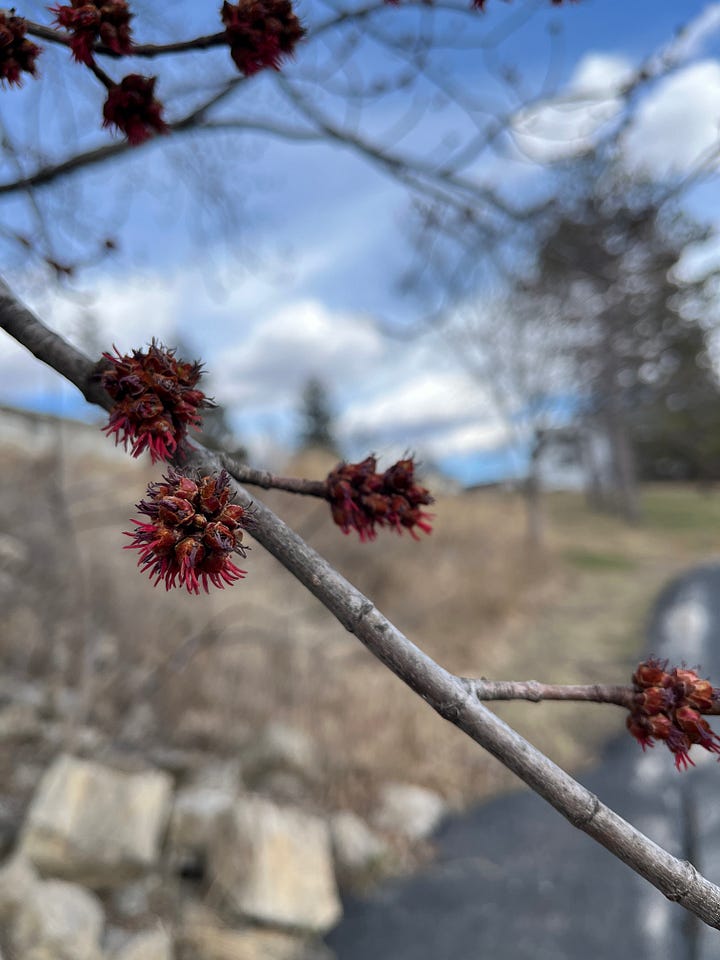
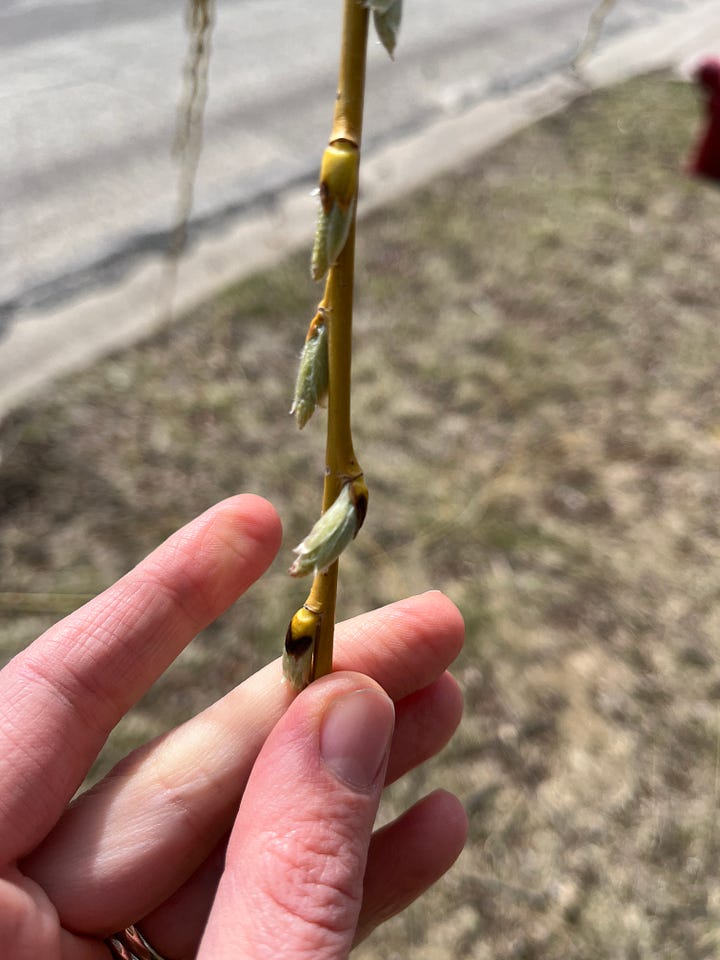
March Tasks
Continue monitoring hives externally, doing very brief checks if the temperatures are above 60˚F (especially for a few days in a row)
When doing checks, keep it brief, monitor for egg laying, check honey stores and assess pollen levels if possible. This is when the hive population is the lowest, when winter bees are expiring, and new brood hasn’t quite hatched yet. Risk of starvation is high at this time too. If necessary supplement with reserved honey stores, pollen patties (especially if brood rearing is underway).
Order packages or nucs if needed. Often packages arrive some time in April, while nucs (nucleus colonies) aren’t dispersed until May. Make sure you have everything prepared for their arrival, including your apiary location, a leveled hive stand, your hive boxes, frames and lid (depending on what type of hive you are utilizing)
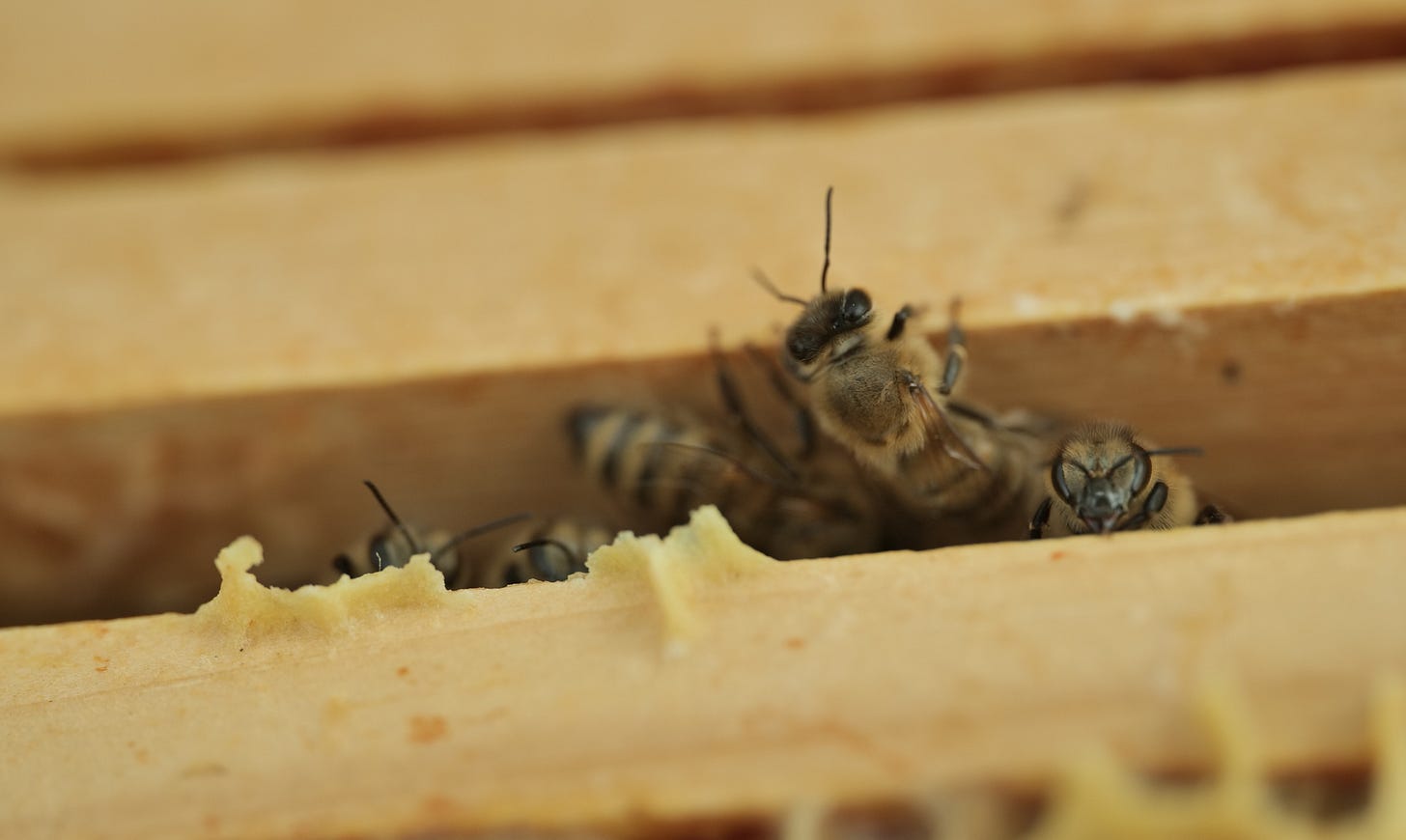
References:






The sheer scope and variety of this post is incredible. I love the range of historical and practical information you convey. 🐝
Such knowledge. Thank you for sharing. I just continual find it fascinating to read all that is involved with bee keeping. An exploration into something I may only experience through words. And the history!